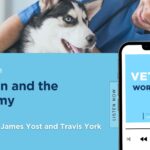
This article appears in Forbes
Last week, I shared a post translating the whole of financial planning into the language of life, suggesting that all the jargon, products, pitches, services, and strategies can be beneficially simplified into a four-quadrant approach that imputes more meaning into our money management:
- Live – Provide a predictable source of income to ensure provision in the present.
- Grow – Grow your assets to ensure provision for the future.
- Protect – Protect your family, lifestyle, and property.
- Give – Give to the people and causes that are important to you.
The temptation is to assume that the practice of investing is buried within a single pillar above—Grow—and indeed, I believe that is how the financial industry has presented investing to the world and how most of us, even as financial advisors, have seen it. But what if we deconstructed portfolio management even further? Or, for starters, why would we do that?
According to Dr. Daniel Crosby, the author of several books, including The Behavioral Investor and The Laws of Wealth, “By simply breaking our investments into constituent buckets and labeling them with a purpose, we are able to gain the perspective necessary to ignore volatility in favor of what matters most.”
What matters most, especially in times of market ups and downs, is staying the course. So, is there any evidence that a “bucketed” approach to investing helps investors do so? Crosby introduced me to a study by the SEI Wealth Network following the most dramatic stretch of market volatility in most of our lifetimes, the financial crisis of 2007 through 2009.
They compared how investors responded in “traditional investment portfolios” (think your standard 60/40 stock/bond setup) to those invested in a “goals-based investment strategy” (like the “bucketed” approach we’re discussing). Here’s what they found:
“Of those in a single, traditional investment portfolio:
- 50% chose to fully liquidate their portfolios or at least their equity portfolios, including many high-net-worth clients who had no immediate need for cash.
- 10% made significant changes in their equity allocation, reducing it by 25% or more.
Of those clients in a goals-based investment strategy:
- 75% made no changes.
- 20% decided to increase the size of their immediate needs pool but left their longer-term assets fully invested.”
If I’m reading that correctly, 60% of those in the typical portfolio structure bailed on the plan. At the worst possible time. And 95% of those with a purpose-driven approach stuck with the plan. At the most important time.
So, would you like to see what a goals-based, “bucketed” approach to portfolio management could look like in practice? Let’s look at three examples, recognizing that the power of this methodology is in its customizability. It is more a framework than a prescription, and every individual or family’s breakdown will be different.</P
The Millionaire Next Door – This 70-something couple has $1,000,000 in retirement savings, mostly in IRAs, receives $40,000 per year in Social Security income, and needs an additional $30,000 per year in income to live comfortably, for a total of $70,000 per year.</P
- Give – Faithful tithers, the MND couple has a plan in place to contribute $8,000 per year to their church as Qualified Charitable Deductions (QCDs), directly from their IRA accounts.
Protect – $30,000 plus $10,000 for a special trip to Europe adds up to $40,000 in FDIC-insured savings vehicles. - Live – The MND couple would feel most comfortable having 10 years’ worth of living expenses (and giving) invested in low-volatility vehicles. If we only assumed the investments would keep pace with inflation, that would mean $380,000 would be invested in this bucket.
- Grow – With the next 12 months on lockdown and a decade of income provided, they are more comfortable taking risks with the remaining $572,000 to be invested in their Grow bucket. If we estimated a 7% rate of return on the portfolio, they would have $1,125,210 in this bucket, ready to refill the Live bucket (and more) in 10 years. Even if we assumed a 5% rate of return, they’d still have $931,727 ready to be redeployed in a decade.
The Careful Client – This 60-something recent widow was a successful entrepreneur who was very comfortable taking risks in her chosen field but has always been uncomfortable with the wild swings in the market. Having sold her business, she has $6 million, almost entirely in cash and an annual income needs of $125,000—and doesn’t want to rely at all on Social Security for her financial security.
- Protect – The careful client wants to build a mote of financial protection—three years of living expenses, or $375,000—in the stablest of the stable securities.
- Live – Earning her nickname, the Careful Client wants to populate her Live bucket with a lifetime’s worth of vehicles designed to create predictable cash flow, even if it invades the principal. It dedicates $3,750,000 to that cause, estimating a healthy, 30-year lifespan.
- Give – To reduce the tax burden of her entrepreneurial exit and support three causes that are near and dear, she slates $150,000 for a donor advised fund.
- Grow – That leaves $1,725,000 to be invested in an equity portfolio that is constructed specifically based on the Careful Client’s personal values. She sees this portfolio not so much as invested for her but for her two children and her chosen causes. If it only earned 7% per year and she lived out a full 30 years, it would be worth more than $13 million at the time of her passing.
The Generational Giver – Our last couple experienced more financial success earlier in life than they ever expected, retiring in their mid-50’s with $15 million after the company they both worked for went public. They have three children, two still in college. Still, otherwise, they live fairly frugally, their windfall considered, and they are intent on seeing their financial wherewithal do all the good it can *during* their lifetime. Their annual income need is $175,000.
- Protect – With two kids still in college and likely three weddings to come, they want to have two years’ worth of living expenses in their Protect bucket, plus $30,000 for a big family trip and $55,000 to buy a new car outright. Total needs are $435,000.
- Live – They’re not particularly skittish about market investing and know that it will be important to outpace inflation if they retire early, so they are comfortable having seven years of cash flow covered in their Live bucket, or $1,225,000 to start, with a plan to refill that bucket every seven years from the proceeds in their Grow bucket.
- Grow – That leaves a big number to invest in an equity-heavy portfolio—$13,340,000. If it earned 7% for seven years, it would spin off more than $7 million in growth, but the Generational Givers know the market is not always that predictable. Every seven years, they’ll peel off enough to replenish their Live bucket, but their growth plan, however, is really about their Give bucket.
- Give – It is important to the Generational Givers to be generous with their children, but they don’t want their inheritance to be a gaudy number in a portfolio that their kids won’t even see until they don’t need it anymore! Instead, they intend to be very intentional, providing gifts for their children and presumed grandchildren throughout life, both through funds and especially experiences that are designed to expand their horizons. Then, they plan to work with their children to determine a limited number of non-profit organizations with which they can all partner, fiscally AND physically, in relationship and throughout life such that they will be able to see the fruits of their collective investments.
For hundreds of years, the financial industry has required its customers and clients to invest their money through the lens of corporate speak and “financialese,” and I have no doubt that is one of the foremost reasons we see investors abandoning their plans all too often. Don’t you think it’s time that we translated investing into the language of life?






